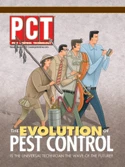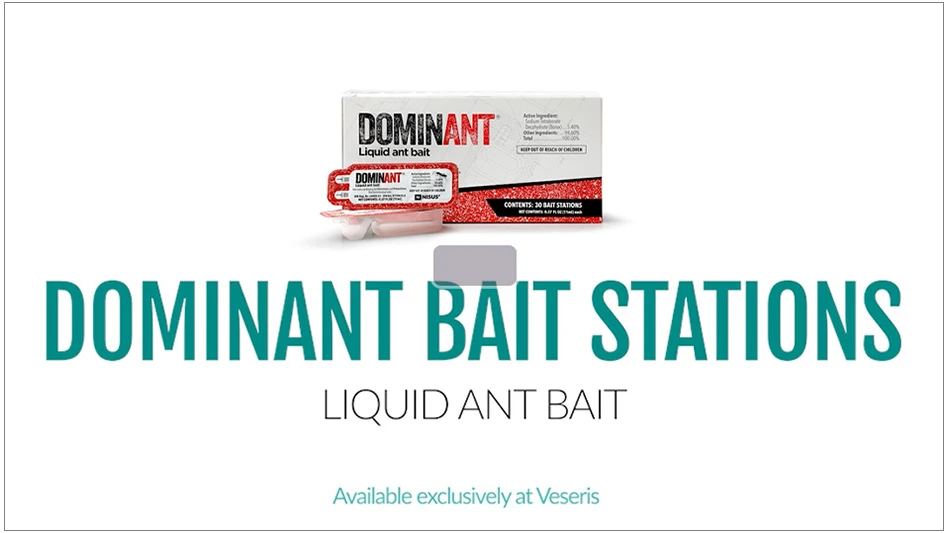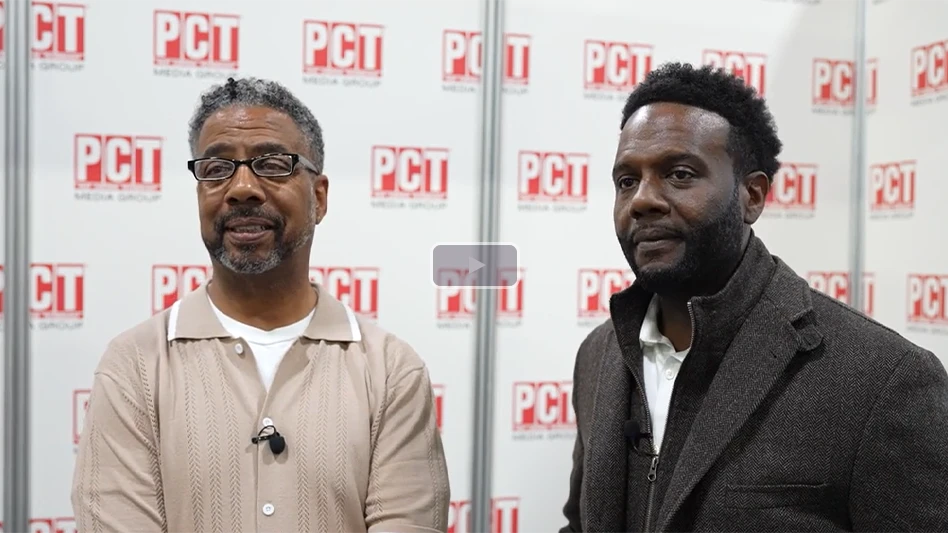Professional pest management can be a highly technical business, one requiring considerable knowledge and experience for some situations. Most service professionals deal with a select group of pest species probably 90 to 95 percent of the time in their city or area. A few times per month, however, a customer will present a less common species in or around a building. In some cases, a highly unusual pest will be encountered, stumping the service professional and thus delaying a solution of the infestation for the customer.
Possibly the most difficult task for service professionals to learn is to identify insects, spiders and other arthropods. A certain amount of skill and experience is needed to identify an insect to family level and even more to take specimens to genus and species. Entomologists spend semesters learning the anatomy, morphology and taxonomy of arthropods, spending countless hours peering through a microscope and coping with taxonomic keys that might contain dozens, if not hundreds, of couplets. Pest management service professionals don’t need be entomologists to be successful, but they do require some amount of proficiency in insect morphology and taxonomy.
What is the best way to teach insect identification to a new employee who has no experience or to increase the knowledge of even an experienced professional? A plethora of field guides and books exist to assist in identifying specimens. Such references are invaluable because no one, especially non-entomologists, can remember all the identifying characters of all the insects that might be encountered. Still, even with a good field guide containing color pictures, service professionals, both new and experienced, misidentify specimens, especially the small ones (e.g., ants and stored product beetles).
Teaching identification is best done with actual specimens. Seeing different ant species in comparison to each other clarifies the differences — and the similarities. New professionals are often surprised at the small size of most pests, especially since the pictures in the books make them seem larger. In order to best teach identification, a pest control company needs a collection. Such a collection needs to contain the most common pests found in the company’s area of operation, but it should also include less common and even unusual insects, spiders and other arthropods.
GETTING STARTED. Before the first insect is collected, a small amount of planning and some supplies are required. First, prepare a list of pests that should be included in the training collection and divide the list into two columns. The first column will include the 25 to 30 most commonly encountered pests for your area and the second list will contain the less commonly encountered pests that your employees need to be able to identify. Both lists will likely be longer in southern states where more different species of insects and other arthropods are likely to be found. Focus initial efforts on collecting the most commonly encountered pests.
After the list is made, a few supplies will be needed for collecting the specimens to be used. The most important item required is a set of collection vials. It is a good idea to have several different sizes of vials. Do not skimp on having vials available — keep 150 to 200 on hand. The cost of several hundred vials will be $70 to $100; they can be obtained from BioQuip Products of Gardena, Calif. (www.bioquip.com). Be sure to buy vials that have a plastic seal; otherwise the alcohol used to preserve specimens may dry out over a long period of time.
Other supplies that will be needed for collecting, preserving and displaying insects include a killing jar, ethyl acetate, 70% isopropyl rubbing alcohol, foam spreading boards, insect pins (sizes #000, #1 and #2), both soft and hard insect forceps, an aspirator (optional), Riker mounts (2½ by 3 inches and 4 by 5 inches) and display boxes (wood boxes are best but cardboard boxes with glass tops are available). These items are all available from BioQuip Products; their use will be discussed later in this article. BioQuip also sells a short guide on the procedures for collecting and preserving insects.
COLLECTING SPECIMENS. The easiest way to obtain a variety of specimens quickly is to charge sales and service professionals with the task. Instruct employees to collect any specimens they find and to gather as many specimens as possible. The purpose for collecting many specimens of each type of pest is that specimens are often broken during training, so a backup supply is needed. It is also important to have both a study collection and testing collections.
Specimens may be returned to the office in a variety of containers, such as zipping plastic bags, pill bottles and jars, which customers often provide to sales and service professionals. It is important to immediately transfer specimens into a suitable container, preserving fluid, (e.g., 70% rubbing alcohol) or to spread them to dry on foam boards using pins. Specimens that are left in jars or zipping plastic bags without preserving fluid tend to rot after a few days.
Certain insects, such as ants and stored product pests, are easy to collect in large numbers. For ants, scoop or brush a large number of live ants into a zipping plastic bag and bring it back to the office to transfer the individual ants into a vial of alcohol. Pour small amounts of the material (soil, grass, etc.) containing the ants into a pie pan and remove the individual ants using soft forceps or an aspirator. Transfer the ants into a vial containing 70% isopropyl alcohol and label the vial. Ants also can be collected in the field from their trails on walls, floors and other hard surfaces by using an aspirator.
Whenever stored product pests are encountered, bring a sample of the infested material back to the office. If large numbers of specimens are present in the sample, transfer them using forceps or an aspirator into a vial containing alcohol. Adult Indianmeal moths and similar moths should not be stored in alcohol; instead, they should be killed by freezing, then allowed to dry and stored in a dry, empty vial. If the infested food item does not have enough stored product beetles or moths, infested food product can be transferred into a jar and specimens can be raised for future collection and preservation.
Cockroaches can be difficult to collect in large numbers. Trapping these insects is one method for collecting large numbers of cockroaches. Another method is raising them in five-gallon plastic buckets. Cockroach trapping is accomplished by placing strips of masking tape on the outside of empty quart-sized paint cans (available new from hardware stores) from the top to the bottom. A thin layer of petroleum jelly smeared around the inside lip of the can serves to keep insects entering the can from crawling out. You can bait the paint can with a piece of bread soaked in beer. Numerous such traps are placed next to known or suspected harborages of the target cockroach and then are checked the next day. Captured cockroaches should be killed by freezing or in a killing jar (using ethyl acetate), or transferred to 5-gallon buckets with lids for rearing purposes.
If you decide to raise cockroaches, install a screen in the bucket’s lid, smear a layer of petroleum jelly around the inside top of the bucket and place sand, cardboard tube shelters, water and dried pet food in the bucket with the cockroaches. An aquarium also can be used if it has a tight-fitting screened lid. Once a week, feed the cockroaches some banana or apple, but remove the uneaten portions of the fruit after a couple of days to prevent molding or the development of fruit flies.
Instruct employees that when they find large numbers of a particular pest to collect as many specimens as possible (without expending too much time to do so). For example, cluster flies or boxelder bugs may be encountered inside a building in large numbers and these insects can be swept into a zipper bag or jar. A single "find" of a pest may provide enough specimens so that future collecting of that pest is no longer necessary.
PRESERVING INSECTS. Soft-bodied insects, such as insect larvae and termites, must be stored in preserving fluid (70% rubbing alcohol). Before storing moth or beetle larvae in alcohol, however, the larvae should be killed by boiling for 30 to 60 seconds in water — otherwise the internal fluids of the larvae break down, causing the larvae to turn brown or black. Spiders also should be stored in alcohol in vials.
Ants, fleas, ticks, springtails, amphipods and similar small arthropods can be preserved directly into alcohol. Larger insects, such as cockroaches, crickets, bees and wasps, also can be killed directly by placing them into alcohol in vials or small jars. These larger insects, however, may break down in the alcohol after several years of storage so as soon as possible they should be pinned out on foam spreading boards, allowed to dry and then stored in display boxes for future use. The legs and antennae are spread into place using insect pins so that all identifying characters can be seen. The wings of bees, wasps, butterflies, etc., need to be held in place using small strips of paper pinned to the spreading board.
DISPLAYING INSECTS. For a study collection, larger insects can be mounted on pins in a glass-topped display case or can be displayed in individual Riker mounts. Place an identifying label next to or under each insect. Soft-bodied insects such as termites and springtails, and other small insects, such as fleas, ants and ticks, need to be removed from their vials and placed on a microscope slide or in a small Petri dish for examination under a magnifying device. The specimen should be placed into the vial after the examination.
For testing collections, place individual specimens in Riker mounts or vials and number them. Keep a master list of the numbered specimens and their identities. If using a group teaching approach, number the specimens 1-1, 2-1, etc., for group #1 specimen #1, group #2 specimen #1, etc.
Examine the study and testing collections on a regular basis and replace damaged specimens. It is important that trainees examine good specimens; this will make identification easier for them in the field.
CONCLUSION. Preparing a useful insect collection is not difficult, but it does take a little effort in planning, collecting and displaying the specimens. Restrict the collection to the most common pests to begin with and add any interesting specimens that employees may bring in. Specimens of insect damage also should be collected and used in training.
It is amazing how extensive a collection can grow in a short period of time. The key is the proper preservation of specimens so take the time and effort to maintain them so they can be used for years to come. Use the collection several times per year to retrain all employees, because correct identification is the key to successful solutions to any structural pest infestation. Trainees learn identification best from repeatedly examining actual specimens, so take the time to prepare training collections for each office in your company.
The author is a board certified entomologist, a registered sanitarian and manager of technical services at Terminix International, Memphis, Tenn. He can be reached at shedges@pctonline.com.

Explore the November 2003 Issue
Check out more from this issue and find your next story to read.
Latest from Pest Control Technology
- Rose Pest Solution Promotes Kandler to District Manager of Columbus (OH) Service Area
- Webinar: Maximizing Cash Flow — Key Strategies for Business Growth
- WorkWave Announces Wavelytics
- Rising Rat Populations Linked to Warming Temperatures, Urban Growth, Study Finds
- How Might the 2024 Elections Impact PCOs
- Keeping Track of Termite Identification
- Mosquito Joe Earns EPA's PESP Gold Level Designation
- Texas PestVets Coat Drive Collects Over 850 Items for Soldiers’ Angels





